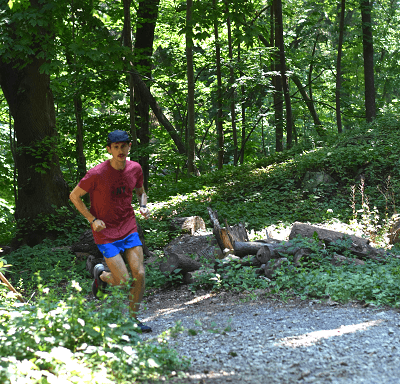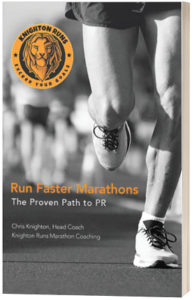Soft Surfaces are Your Friend

Written By: Coach Chris
The Kenyans never pound pavement. Running off-road strengthens ankles, baby tendons, lessens injuries, provides fresher air, and generally makes you feel good. Importantly, dirt roads allow you to run MORE. Kenyans train for 14 to 15 hours a week, and they could never run the same mileage on asphalt.
Roy M. Wallack
City Runners, this article is for you⠀
Run on soft surfaces as much as possible. This is a fundamental rule of training that should not be ignored if you want to get the best out of your running.
Unfortunately the vast majority of runners in the United States completely ignore this rule.
Where are your local grassy parks, soft trails, sports fields, and dirt roads? This is where you should run most of the time.
If you take anything from this article, it is this: Strive to run at least 50% of your mileage on soft surfaces. Seek soft surfaces out on your runs. Develop running routes that connect soft surfaces and include loops on them to increase your time off pavement. Once you get used to it, you’ll be glad you did.
Run More, Get Strong, Prevent Injury
If you dropped a ping-pong ball on concrete, what would it do? It’s not hard to envision it bouncing off the ground and returning almost to the height of your hand. Now, imagine dropping the same ball into grass. It would hardly bounce at all. The grass would deaden the impact and less force would be sent back into the ball.
The same process happens when you run.
Running on soft surfaces significantly reduces the impact forces your body is subjected to. Running on pavement and especially concrete sidewalks sends significant shock waves up your body with each step, prematurely fatiguing your muscles and joints far more than necessary.
Oppositely, running on soft surfaces like grass fields, woodland trails, or dirt paths can feel like a massage on your legs.
By actively seeking out soft surfaces and spending as much of your time running on them as possible, you will be able to run more often with less fatigue and stress on your body.
Running on soft surfaces typically goes hand-in-hand with more irregular surfaces. Small differences in each foot fall will require your body to recruit more muscles and tendons, thereby strengthening your lower limbs and developing additional stability in ways that running on uniform pavement never can.
Over 50% of runners in the United States are sidelined by an injury each year. Running on soft surfaces as much as possible is one of the most important strategies you can adopt to reduce your likelihood of injury.
The best distance runners in the world, Kenyans and Ethiopians, do almost all of their running on dirt roads. Here in the United States, Flagstaff, Arizona is a running mecca for professional distance runners because of the extensive dirt road and trail networks it offers. If the best runners are running on dirt, then you should too.
Planning the Week: Soft vs Hard
Let’s assume your typical running week is broken down into seven days.
Two workouts. One Long Run. Four Recovery Days.
Recovery Days
All of your Recovery Days should be on soft surfaces. The goal of a recovery day is to cover the mileage with as little intensity as necessary to recover for your next hard run. Your pace is completely irrelevant on a recovery day. Run all or most of your mileage on soft surfaces. Run to the closest soft surface from your home and run loops if necessary, or connect multiple soft surfaces with short stretches of pavement. Aim for at least 50% of the run to be on soft surfaces, but more is better.
Workout Days
Most runners will include one or two workout days a week into their schedule. On these runs, it makes sense to run on a surface-type matching the race you are training for. If training for a road race, doing your workouts on paved surfaces will most closely mimic race-day conditions, allow you to run at your goal-pace, and give you sufficient toughness to handle running on pavement.
However, not all workouts need to be done on pavement. Recognize that by running on pavement, your recovery time post-run will be longer. Effort-based workouts and workouts early in a training cycle where pace-work is less important are great opportunities to run hard off-road. Don’t forget about running tracks, which often have a decently-soft surface and can be used for pace-work or effort-based workouts throughout training.
The Long Run
The long run is the most important run for distance runners and also the most important one to take off-road. The difference in impact your body will experience running for 1.5-3+ hours on pavement versus on a soft surface is tremendous. The only time long runs should be completed on pavement is when doing specific race-pace work. Other than that, find a beautiful soft place to run and enjoy the ride. If running from your home, head towards a trail system, dirt road or path to minimize time spent on pavement. Whenever you have the opportunity to jump onto some grass or dirt, take it.
Take-Aways
Be kind to your body and train smart by running on soft surfaces at least 50% of the time (and even more is better).
Develop running routes that head towards soft surface areas (grass parks, sports fields, dirt paths and roads, trail systems). Run loops in these areas or connect multiple soft surface areas to minimize time spent on pavement.
Running off-road not only reduces repetitive-use injuries, it also strengthens your lower legs, ankles, and feet. It makes you a stronger, more resilient runner.
The best professional and elite athletes do the majority of their training on soft surfaces, however, many amateur everyday runners foolishly ignore this crucial running strategy.
Take a lesson from the best runners in the world and get off road.



